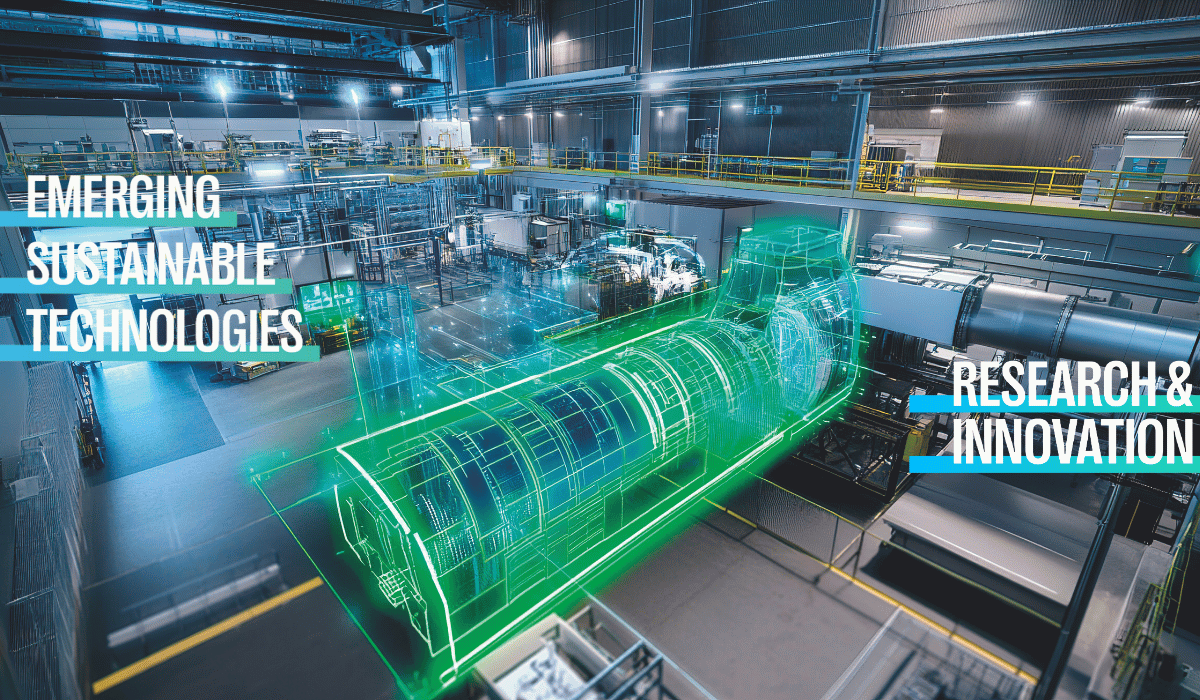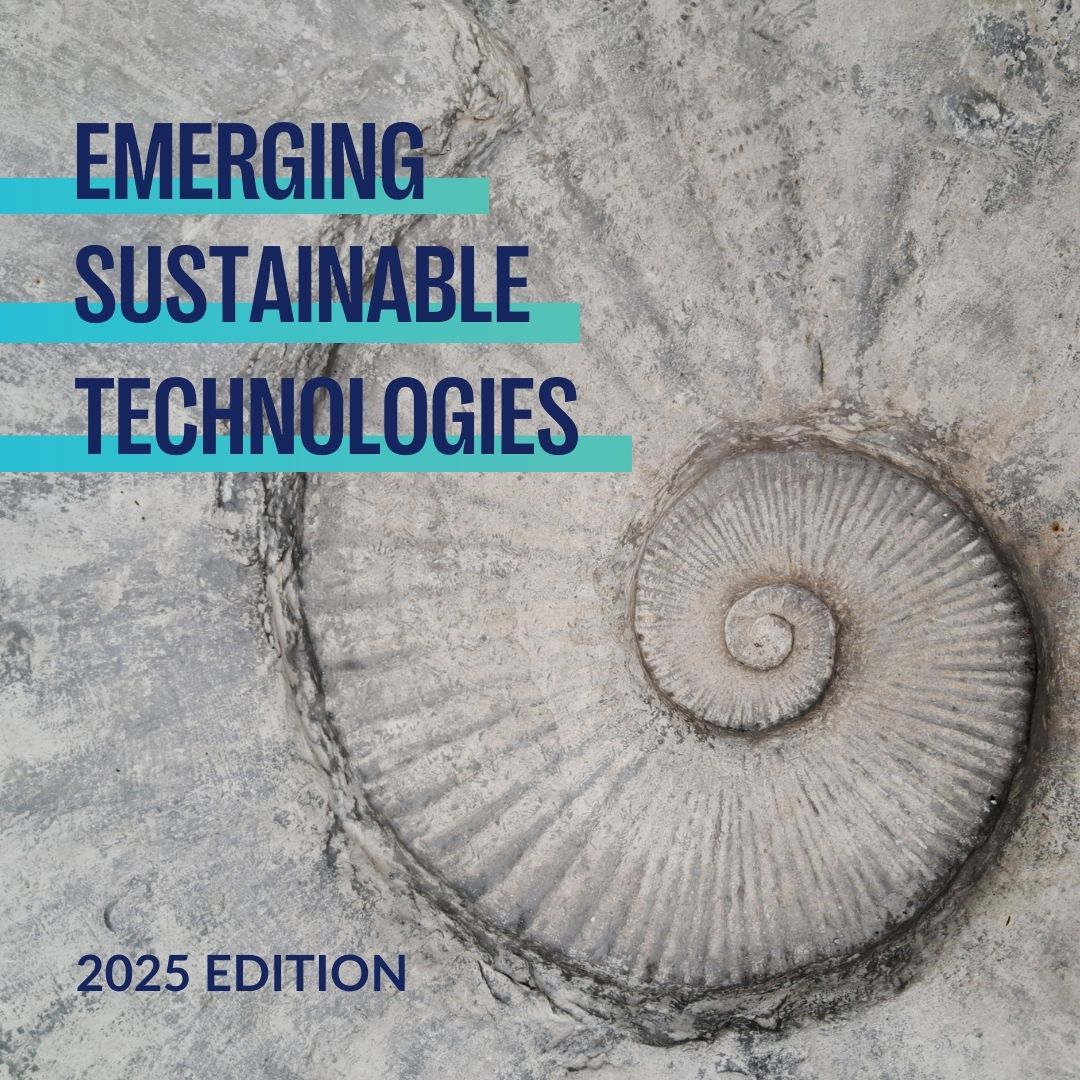


Digital Twinning (...) coupled with AI enables companies to eliminate major technical hurdles, drastically reduce time-to-decision, and design energy strategies for a sustainable future.
Originally developed for industrial applications, digital twins are virtual replicas of physical systems that combine numerical simulations with real-world data. These models enable a deep understanding of how products perform under real conditions and allow for the exploration of improvements to enhance efficiency.
Despite their growing adoption, there is no universally accepted definition of digital twins. The American Institute of Aeronautics and Astronautics (AIAA) defines a digital twin as:
“A set of virtual information constructs that mimics the structure, context, and behavior of an individual or group of physical assets, dynamically updated with data from its physical counterpart throughout its lifecycle, and informs decisions that create value.”
1. Data Collection: Sensors and IoT devices on the physical asset gather data on parameters such as temperature, pressure, and operational status.
2. Data Integration: This data is transmitted to the digital twin, where it is processed and used to continuously update the virtual model.
3. Simulation and Analysis: The digital twin runs simulations to predict outcomes, identify issues, and test scenarios without impacting the physical asset.
4. Feedback Loop: Insights from the digital twin are used to optimize performance, predict maintenance needs, and improve efficiency.
These foundational steps enable digital twins to support a wide range of industrial and environmental applications.
One of the most promising applications of digital twins is in the decarbonization of energy-intensive manufacturing processes
Digital twins offer transformative potential in decarbonising manufacturing processes that rely on combustion. Their benefits include:
• Real-time monitoring and predictive maintenance
• Performance optimisation
• Energy efficiency and emissions reduction
• Remote monitoring and control
• Lifecycle management and risk assessment
• Hardware-in-the-loop testing (A testing method where real hardware components are integrated into simulation environments to validate system behavior)
• Operational flexibility and troubleshooting
• Scenario simulation and forecasting
• Performance: Adapting to high-performance computing environments
• Integration: Defining end-to-end workflows for full deployment
• Data Handling: Efficiently managing and tailoring large data streams
• Interactivity: Enabling user interaction with the digital twin
• Machine Learning Enablement: Enhancing efficiency and uncertainty estimation
Machine Learning detects patterns in large datasets, predicts outcomes, and continuously improves performance without explicit programming.
Reinforcement Learning trains software to make optimal decisions by mimicking human trial-and-error learning.
Generative AI revolutionizes digital twins by enabling advanced simulation, prediction, and optimization. With increased computing power, digital twins can process vast datasets in real time, improving accuracy and responsiveness. This leads to more detailed models that better represent physical systems and anticipate their behavior.
4 case study are illustrated in the 2025 Report:
More information on these case studies in the 2025 Emerging Technologies report
The integration of digital twins into industrial processes is reshaping how companies operate, offering substantial benefits in terms of resilience, adaptability, and efficiency. However, this technological shift also introduces complex social considerations that must be addressed thoughtfully.
Resilience and Adaptability
Industry experts increasingly recognize digital twins as tools for enhancing business resilience. They enable companies to respond more effectively to disruptions and improve operational agility. However, in the case of AI-powered digital twins, many of the reported benefits remain theoretical, with limited real-world validation. This underscores the need for practical experimentation to confirm the claims made in academic and technical literature.
Industrial Digitalisation and Energy Debates
The adoption of digital twins intersects with broader discussions on industrial digitalisation. Environmental stakeholders highlight concerns about the energy trade-offs: while digital twins can optimize industrial energy use, the data centers supporting these technologies consume significant energy themselves. Understanding and mitigating the environmental footprint of digital infrastructure is essential for sustainable deployment.
Socio-Professional Transformations
The rise of digital twins is driving notable changes in the industrial workforce and organizational structures:
• Simplification of Workflows: Digital twins streamline operations, reducing costs and workplace accidents. While this boosts productivity, it may also lead to job displacement in traditional roles.
• Evolving Skill Requirements: There is a growing demand for IT specialists and data analysts, while the need for conventional technical roles may decline. This shift calls for robust retraining and upskilling programs.
• Logistical Reconfiguration: Digital twins alter supply chain dynamics, requiring new strategies for logistics and distribution.
• Changing Employment Geography: As industries evolve, job opportunities may shift geographically—from traditional manufacturing hubs to tech-driven regions.
• Transformation of Management Practices: Decision-making is increasingly data-driven, potentially reducing the influence of frontline workers in operational strategies.
Changing Relationship with Physical Infrastructure
As reliance on virtual models grows, the physical connection between workers and their environments may weaken. This detachment can lead to job relocations and a diminished sense of engagement with the physical workspace. Additionally, the absence of on-site technicians may hinder communication between local stakeholders and operational teams, affecting collaboration and responsiveness.
A Call for Inclusive Transition
While digital twins offer promising advancements, their social implications must be carefully managed. A proactive approach is essential—one that includes stakeholder engagement, workforce development, and a commitment to social responsibility. Ensuring that the transition to digital solutions is inclusive and equitable will help foster a future where technology and human labor coexist harmoniously.
Digital twins contribute significantly to environmental sustainability by enabling real-time monitoring and optimization of energy use. Their benefits include:
• Improved Energy Efficiency: By fine-tuning operations, digital twins help reduce energy consumption and greenhouse gas emissions.
• Enhanced Resource Management: Predictive maintenance and operational optimization minimize waste and extend equipment lifespans.
• Reduced Material Usage: The need for physical prototypes is diminished, lowering material consumption and associated emissions.
Despite these advantages, digital twins also pose environmental risks:
• Infrastructure Demands: The hardware required for digital twin systems consumes substantial energy and relies on Critical Raw Materials (CRMs) such as cobalt, titanium, and indium. These materials are limited in availability and environmentally intensive to extract.
• Electronic Waste: Poor management of sensors and hardware can lead to increased e-waste, exacerbating environmental degradation.
• Emissions from Data Centers: Both direct emissions from operations and indirect emissions from energy suppliers contribute to the environmental footprint of digital twin infrastructure.
In conclusion, while digital twins offer powerful tools for reducing emissions and improving sustainability, their deployment must be carefully managed. Addressing the energy and material demands of supporting infrastructure, as well as the waste generated, is crucial to ensuring that digital twin technologies contribute positively to environmental goals.
Digital twins, especially when powered by AI, represent a paradigm shift in how industries design, operate, and evolve. From optimizing energy use to anticipating climate impacts and reshaping workforce dynamics, their potential is vast. However, realizing this potential requires thoughtful implementation—balancing innovation with sustainability, and efficiency with social responsibility. As we move toward a more digital and decarbonized future, digital twins will be central to building resilient, intelligent, and inclusive systems.
More references, information, examples and use cases in ENGIE's 2025 report on Emerging Sustainable Technologies.
> Download the 2025 report on Sustainable Emerging Technologies <